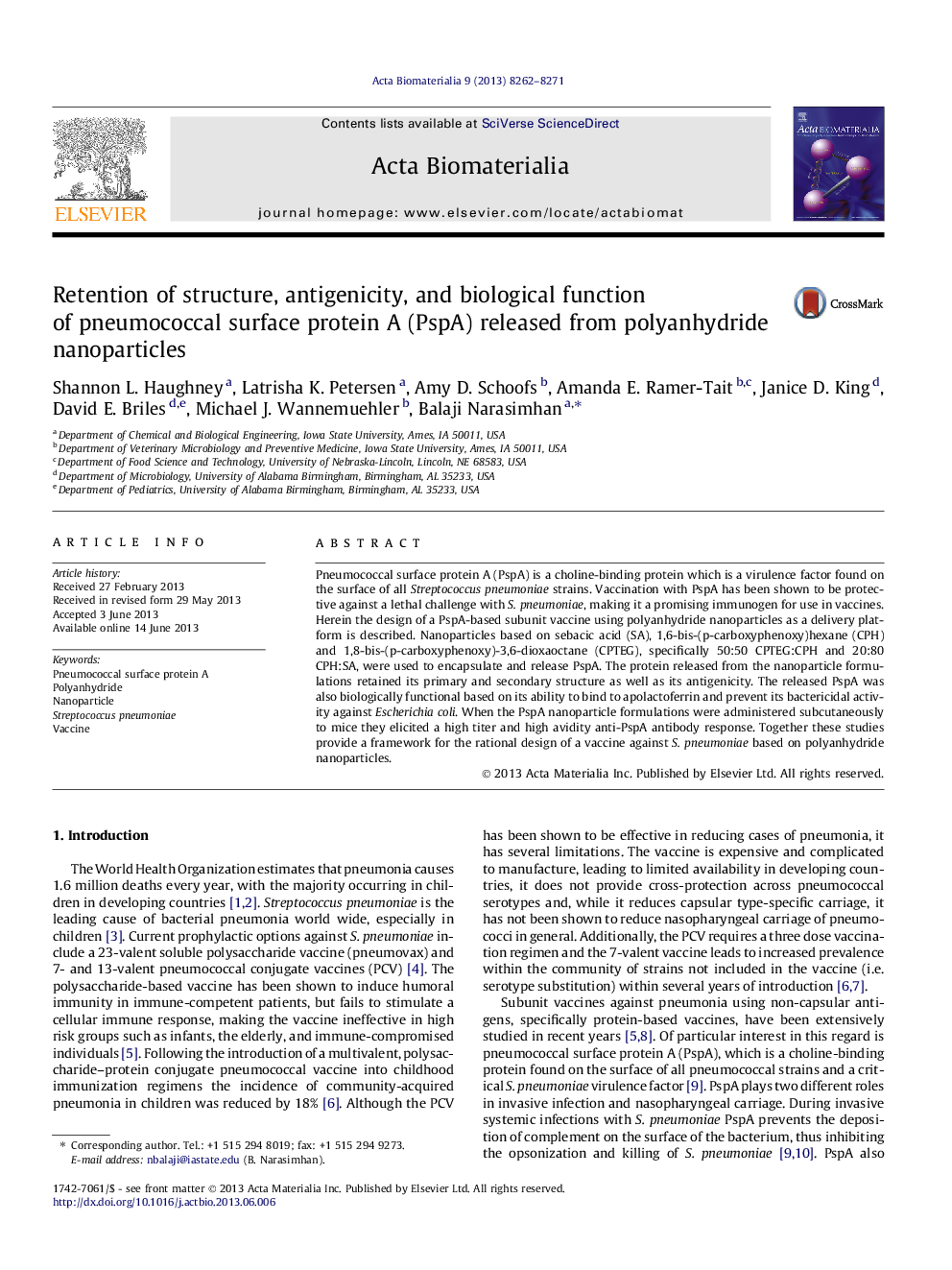| Article ID | Journal | Published Year | Pages | File Type |
|---|---|---|---|---|
| 10159794 | Acta Biomaterialia | 2013 | 10 Pages |
Abstract
Pneumococcal surface protein A (PspA) is a choline-binding protein which is a virulence factor found on the surface of all Streptococcus pneumoniae strains. Vaccination with PspA has been shown to be protective against a lethal challenge with S. pneumoniae, making it a promising immunogen for use in vaccines. Herein the design of a PspA-based subunit vaccine using polyanhydride nanoparticles as a delivery platform is described. Nanoparticles based on sebacic acid (SA), 1,6-bis-(p-carboxyphenoxy)hexane (CPH) and 1,8-bis-(p-carboxyphenoxy)-3,6-dioxaoctane (CPTEG), specifically 50:50 CPTEG:CPH and 20:80 CPH:SA, were used to encapsulate and release PspA. The protein released from the nanoparticle formulations retained its primary and secondary structure as well as its antigenicity. The released PspA was also biologically functional based on its ability to bind to apolactoferrin and prevent its bactericidal activity against Escherichia coli. When the PspA nanoparticle formulations were administered subcutaneously to mice they elicited a high titer and high avidity anti-PspA antibody response. Together these studies provide a framework for the rational design of a vaccine against S. pneumoniae based on polyanhydride nanoparticles.
Related Topics
Physical Sciences and Engineering
Chemical Engineering
Bioengineering
Authors
Shannon L. Haughney, Latrisha K. Petersen, Amy D. Schoofs, Amanda E. Ramer-Tait, Janice D. King, David E. Briles, Michael J. Wannemuehler, Balaji Narasimhan,
